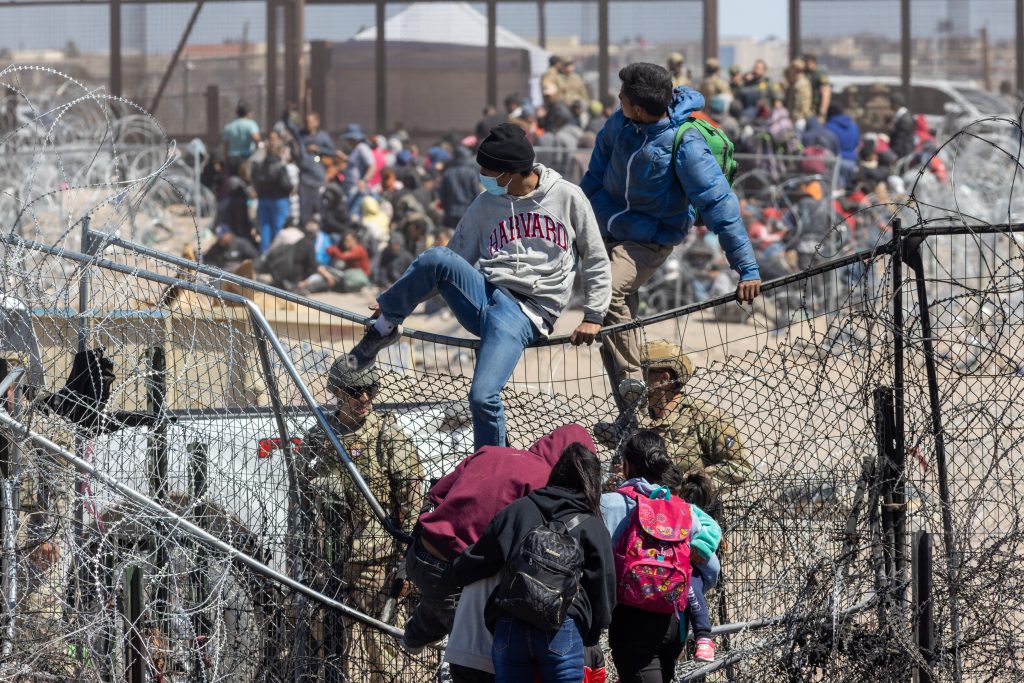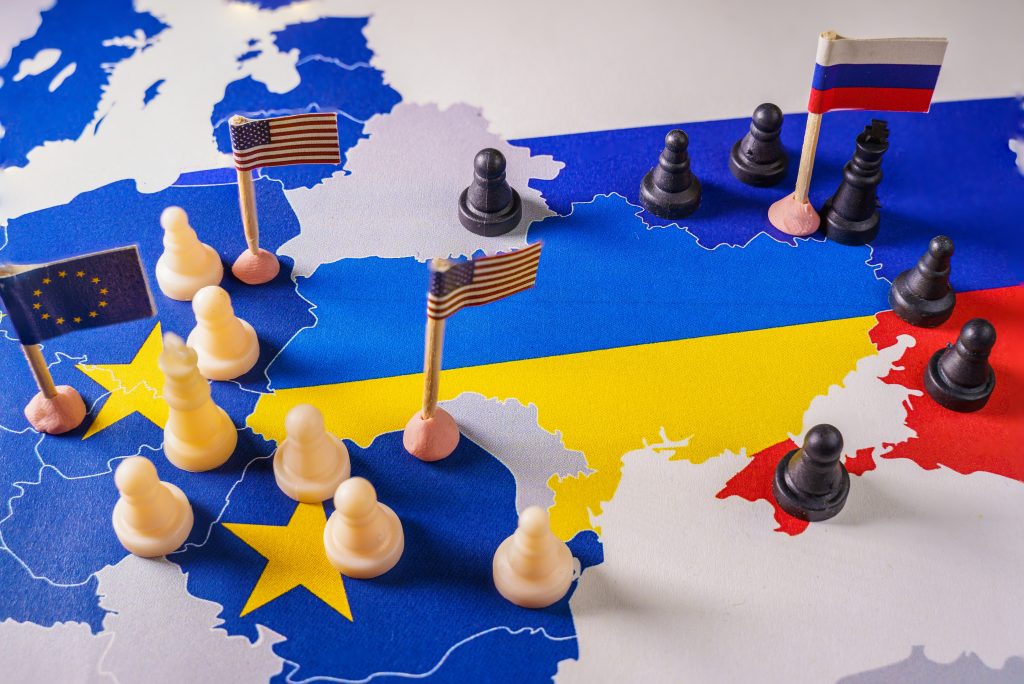Your cart is currently empty!
Experts Reveal the Safest Countries to Be In if World War 3 Breaks Out

With the constant stream of news alerts and a general sense of unease in the air, it’s only natural to ask: Where in the world would actually be safe?
The goal isn’t to dive down a rabbit hole of anxiety, but to take a clear-eyed look at the situation. Finding a credible answer means turning to solid analysis from geopolitical experts and hard data from respected groups, like the Institute for Economics and Peace. What follows is an exploration of which nations are arguably best positioned to weather a global crisis, while also grappling with the complicated truth of what ‘safety’ really means in a tightly connected world.
The Escalating Threats Driving the Safety Crisis

That feeling of a world teetering on the edge isn’t just a perception; it’s a reality reflected in some sobering numbers. The latest 2025 Global Peace Index, released by the Institute for Economics and Peace (IEP), paints a stark picture. The report highlights a world grappling with fifty-six active conflicts—the highest number recorded since the end of World War II. Perhaps more telling is how international these disputes have become, with a record ninety-two countries now involved in conflicts beyond their own borders. This surge in violence came at a staggering human cost, with 162,000 conflict-related deaths recorded in 2023, the second-highest toll in the last thirty years.
Adding to this tension is a fundamental shift in military doctrine that has experts on high alert. Russia has officially lowered its threshold for the use of nuclear weapons, moving from a purely retaliatory stance to one that could potentially be triggered by a conventional attack. It’s this risk of rapid, unpredictable escalation that prompted United Nations Ambassador Vassily Nebenzia to deliver a grave warning, stating that the world could “end up on the verge of a nuclear disaster” if de-escalation fails.
So, in this volatile landscape, how can anyone responsibly identify a “safe” nation? This is where the Global Peace Index becomes such a valuable tool. It’s not just a simple list; it’s a comprehensive assessment designed to measure national peacefulness by analyzing 23 different factors. These metrics cover everything from a country’s level of political stability and violent crime to its relationship with neighboring countries and its degree of militarization. By using this data-driven framework, it’s possible to move beyond speculation and identify the nations that consistently demonstrate the qualities of a stable and peaceful society—the very foundations of a potential safe haven.
The Essential Traits of a Crisis-Proof Nation

While the Global Peace Index provides a snapshot of current peacefulness, a nation’s ability to act as a true safe haven during a global crisis depends on more than just a high ranking. Geopolitical analysts point to a handful of core attributes that determine long-term resilience. These are the foundational pillars that separate a temporarily peaceful country from a genuinely defensible sanctuary.
1. Geographic isolation: The most intuitive factor is simple distance. Being far removed from the epicenters of global power and conflict—primarily North America, Europe, and Asia—dramatically reduces the likelihood of being a direct target in a conventional war. While no place is truly safe from the global reach of nuclear fallout, remoteness still provides a critical buffer against initial strikes and the immediate chaos of spreading ground conflicts.
2. A policy of principled neutrality: History has repeatedly shown that not picking a side is a powerful defense strategy. Nations with a long-standing, credible policy of non-alignment are less likely to be perceived as an enemy by major world powers. Switzerland is the classic example, but any country that actively avoids military alliances and refrains from participating in foreign conflicts builds a diplomatic shield that can be more effective than an army.
3. Resource self-sufficiency: In a world where global supply chains have shattered, a nation’s survival hinges on its ability to provide for its own people. This means, above all, food and energy security. Experts note that a country like Argentina, with its vast and fertile agricultural lands, is well-positioned to endure a global famine because it can grow more than enough food to feed its population, even in a crisis.
4. A secure homeland: Finally, the nature of the land itself and the society that lives on it provide the last layer of security. Mountainous terrain, like that of Bhutan or Switzerland, creates natural barriers to invasion. Internally, a country with low levels of crime, political stability, and strong social cohesion—the very factors measured by the GPI—is far less likely to collapse from within when external pressures mount. A nation at peace with itself is better equipped to handle a world at war.
A Look at the World’s Potential Sanctuaries

With this blueprint for survival in mind, a short list of nations emerges from expert analysis and the rankings of the Global Peace Index. These countries, each for different reasons, possess the key attributes of a potential safe haven. It’s important to note, however, that each comes with its own unique set of strengths and vulnerabilities.
Islands of Stability
Leading the pack is Iceland, which has held the top spot on the Global Peace Index since 2008. Its primary defense is its remote location in the North Atlantic, making it a highly unlikely target for conventional military action. Its commitment to neutrality further insulates it from distant conflicts. Similarly, New Zealand consistently ranks near the top for peacefulness (second in the 2025 GPI). Its geographic isolation in the South Pacific, stable democracy, and mountainous terrain offer multiple layers of protection. Both nations also have the advantage of being able to sustain themselves, with New Zealand in particular possessing a robust agricultural sector.
The Mountain Fortresses of Neutrality
The quintessential neutral nation, Switzerland has famously stayed out of European conflicts for centuries. Its security is a combination of principled non-alignment, a famously well-prepared civilian population, and the formidable natural barrier of the Alps. The country is also dotted with nuclear fallout shelters, a remnant of Cold War-era planning. Bhutan, a small kingdom tucked away in the Himalayas, offers a different model of mountain sanctuary. Landlocked and notoriously difficult to access, it has maintained its neutrality since joining the United Nations in 1971. Its safety comes from being both geographically shielded and politically non-threatening.

Food Security in a Fragile World
In a scenario where global food supplies are disrupted, Argentina stands out. Geopolitical analysts have identified it as “one of the most likely places to survive famine” due to its vast, fertile lands capable of producing resilient crops like wheat. Its location in South America also keeps it far from the world’s primary conflict hotspots. Neighboring Chile offers advantages through its sheer length and diversity. Its 4,000-mile coastline provides countless isolated communities, while its advanced infrastructure and varied natural resources could support its population through a long-term crisis.
Remote Havens
For some nations, safety doesn’t come from strength, but from a lack of strategic importance. Small, remote island nations like Tuvalu and Fiji in the Pacific hold little military or economic value, making them an illogical target for conquest or attack by a major power. Their very remoteness and small scale become their greatest defense.
The Fine Print: Why No Sanctuary Is Truly Safe

After identifying these potential sanctuaries, it’s easy to feel a sense of relief. But here lies the harsh and unavoidable truth of the 21st century: in a full-scale global conflict, the idea of a perfect escape is an illusion. The very nature of modern warfare and our interconnected world ensures that no nation, no matter how remote or neutral, can remain completely untouched.
The most immediate threat that transcends all borders is nuclear fallout. Radioactive particles thrown into the upper atmosphere would be carried by wind and ocean currents across the entire globe, eventually contaminating the land, water, and air of even the most isolated havens. Geographic distance might delay its arrival, but it cannot prevent it. But the danger doesn’t end with direct contamination. Scientists have long warned of a secondary, more insidious effect known as “nuclear winter.” The massive amounts of soot from incinerated cities could block sunlight on a planetary scale, triggering a catastrophic drop in global temperatures and devastating agriculture worldwide. In that scenario, even the most fertile fields in a country like Argentina would fail, rendering the pillar of food security moot.
Layered on top of this environmental catastrophe would be the silent but total failure of the systems that run modern civilization. Global supply chains, the arteries that deliver everything from life-saving medicines to basic machine parts, would be severed. At the same time, communication satellites and undersea cables—the nervous system of our digital age—would likely be among the first targets, plunging even the most physically secure locations into an information abyss and isolating them completely.
Why True Safety is Collective

Confronting the reality that no location offers perfect immunity can be disheartening. Yet, this realization does not have to lead to despair. It can instead prompt a fundamental shift in focus: from a search for a place of refuge to the cultivation of resilience. On a personal level, this redefines preparedness. It becomes less about a geographic destination and more about strengthening one’s immediate environment—building robust community ties, acquiring practical skills for self-reliance, and fostering the psychological fortitude needed to navigate profound uncertainty.
While personal and community resilience are vital, they represent only one part of the equation. The ultimate conclusion is that true, lasting security can only be achieved by preventing catastrophic conflict from occurring at all. This aligns with the concept experts call ‘Positive Peace’—not merely the absence of violence, but the active presence of institutions and attitudes that foster stability. It involves a steadfast commitment to diplomacy, the support of inclusive governance, and strategic investment in the societal structures that prevent nations from fracturing under pressure.
Thus, the journey to find the safest country concludes with a profound insight. The greatest security is not found in a remote sanctuary isolated from the world, but in a world that is collectively and intentionally made more secure. Safety, in its truest sense, is not a destination on a map, but a shared responsibility.
